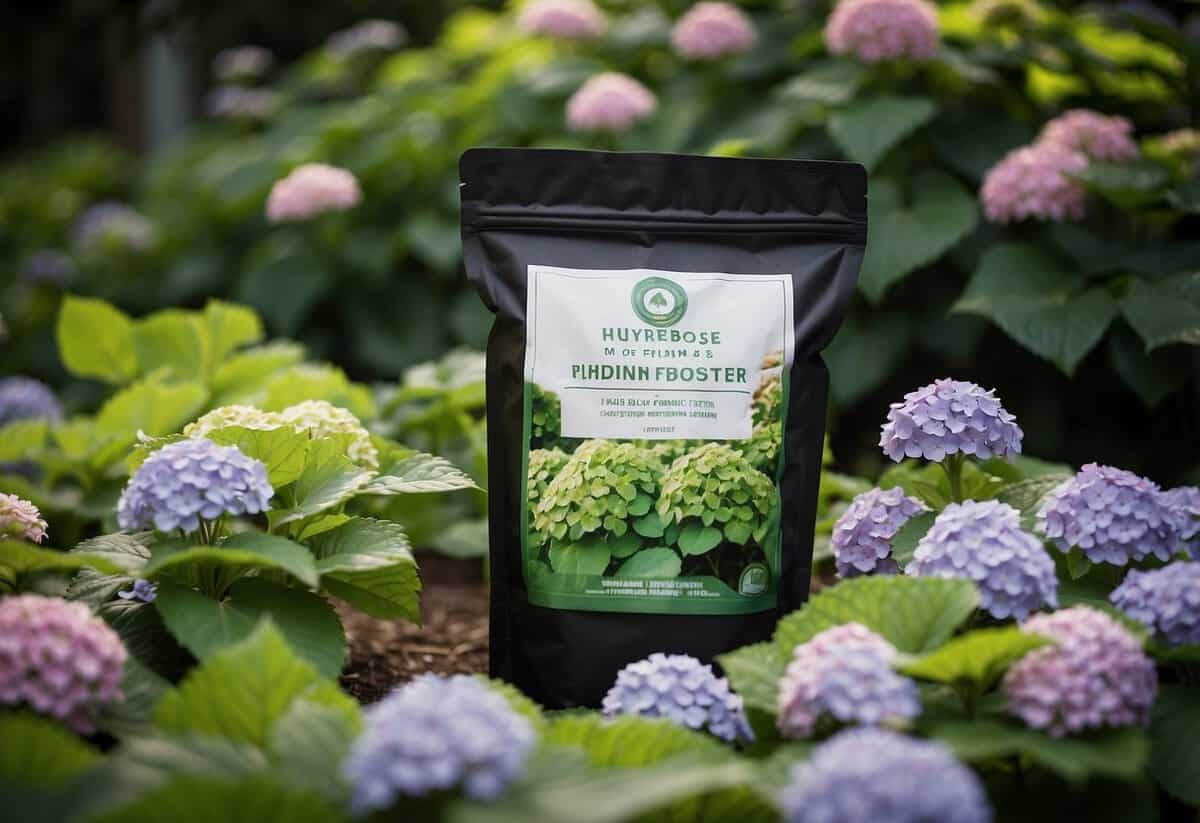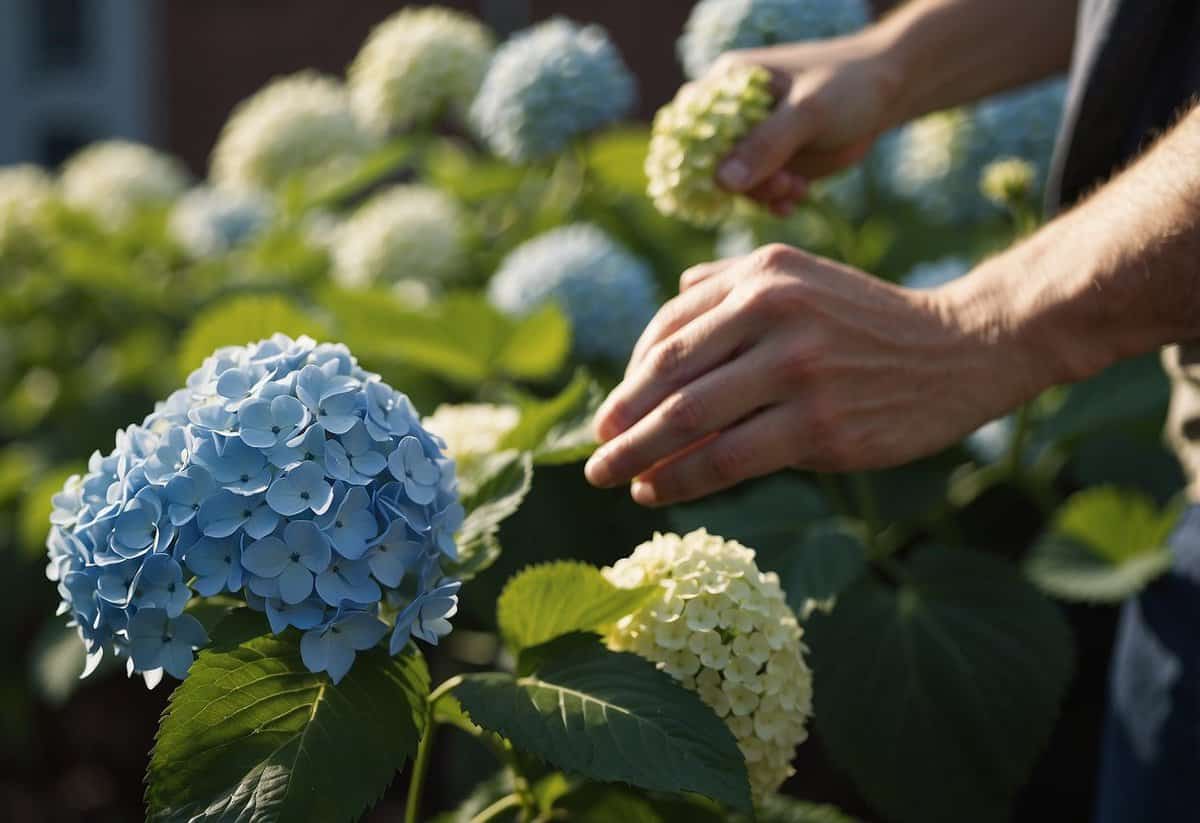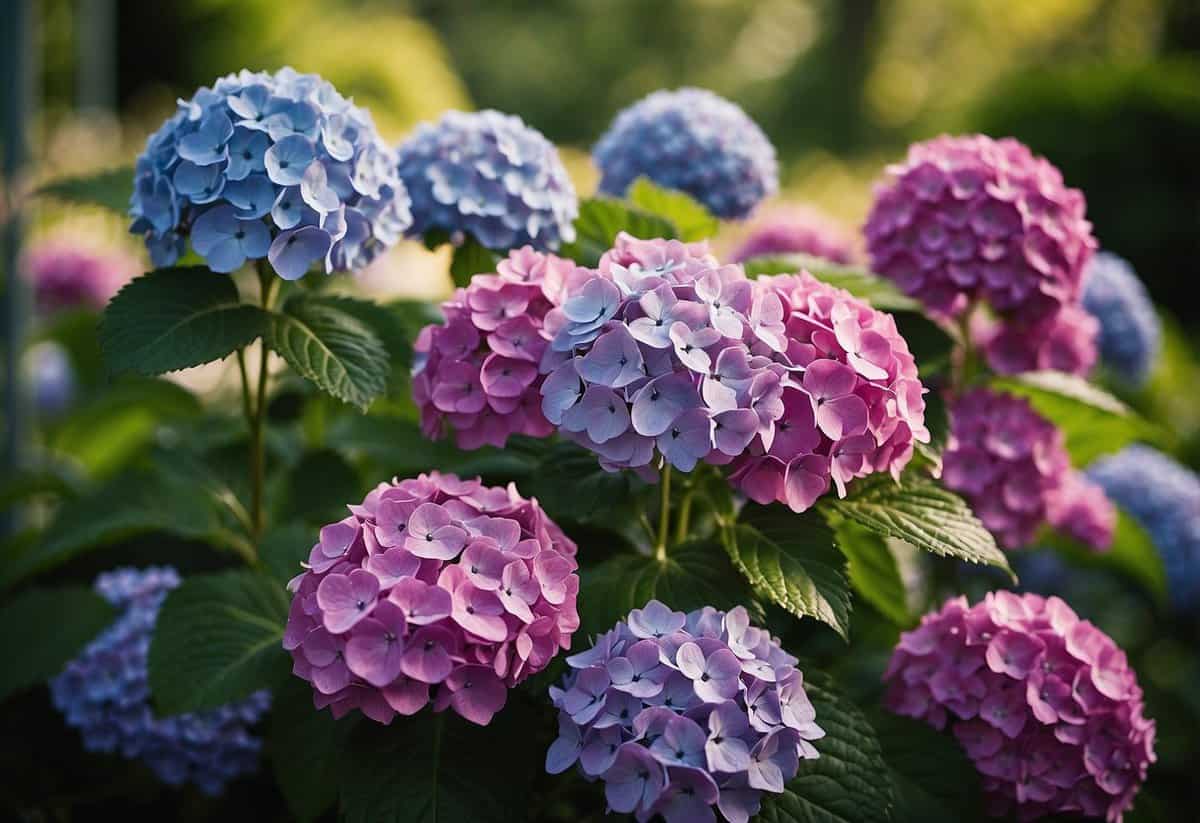What is the Best Fertilizer for Hydrangeas to Bloom? Tips for Lush Blossoms
Are your hydrangeas not blooming as much as you’d like? Selecting the right fertilizer is crucial for vibrant, flourishing blooms. The best fertilizer for hydrangeas is one that has a balanced mix of nutrients, especially with higher phosphorus levels. Phosphorus is key to promoting larger and more abundant flowers. Look for formulas with a middle number higher than the other two, like 10-20-10.

Avoid fertilizers high in nitrogen, as they can lead to lush leaves but fewer flowers. Instead, opt for organic options like Espoma Organic Holly-Tone, which is balanced and provides the essential nutrients your hydrangeas need for incredible blooms. To delve deeper into the specifics, check out the detailed recommendations at Bob Vila.
Water your plants well after applying fertilizer to help the nutrients penetrate the soil effectively. Also, remember to not let fertilizer touch the foliage directly to prevent leaf burn. With the right fertilizer and care, your hydrangea garden will soon be bursting with beautiful blooms. For more tips on fertilizing hydrangeas effectively, visit Better Homes & Gardens.
Understanding Your Hydrangeas

To help your hydrangeas bloom their best, it’s essential to know the types of hydrangeas you are growing, their growth and blooming cycles, and their specific soil preferences and pH levels.
Types of Hydrangeas
There are several types of hydrangeas, including bigleaf, panicle, smooth, oakleaf, and mountain hydrangeas. Bigleaf hydrangeas are popular for their large, colorful blooms. Panicle hydrangeas are known for their cone-shaped flower clusters. Smooth hydrangeas offer large, white blooms and are hardy. Oakleaf hydrangeas have unique foliage that turns red in the fall. Mountain hydrangeas are less common but provide delicate lace-cap blooms.
Choosing the right type for your garden can make a significant difference in blooming success.
Growth and Blooming Cycles
Understanding the growth and blooming cycles of your hydrangeas is crucial. Bigleaf hydrangeas bloom on old wood, meaning they set buds in late summer for the next year’s flowers. Panicle hydrangeas bloom on new wood, producing flowers on new growth each year. Smooth hydrangeas also bloom on new wood and can be pruned back heavily in late winter.
Oakleaf hydrangeas bloom on old wood. Mountain hydrangeas, like bigleaf, bloom on old wood and need minimal pruning. Knowing when and how to prune helps ensure abundant blooms.
Soil Preferences and pH Levels
Hydrangeas have specific soil preferences, especially regarding pH levels. Bigleaf and mountain hydrangeas prefer acidic soils with a pH of 5.2-5.5, which can enhance blue flower color. To keep the soil acidic, you can add peat moss or sulfur. For pink flowers, the soil should be more alkaline (pH 6.0-6.2), and you can add lime to achieve this.
Panicle hydrangeas adapt well to various soil pH levels but thrive in slightly acidic to neutral soil. Smooth hydrangeas prefer moist, rich, slightly acidic soils. Oakleaf hydrangeas do well in rich, well-drained soils and can tolerate a range of pH levels from acidic to neutral.
Understanding these preferences can help you provide the best growing conditions for your hydrangeas.
Choosing the Right Fertilizer for Hydrangeas

Different types of fertilizers can help your hydrangeas grow healthy and bloom beautifully. You need to choose fertilizers that provide the right nutrients and decide between organic and synthetic options.
Balanced Fertilizers and their Effects
Balanced fertilizers, like those with a 10-10-10 or 20-20-20 N-P-K ratio, give your hydrangeas an even mix of nitrogen, phosphorus, and potassium. These elements are essential for plant growth. Nitrogen helps with leaf and stem growth, phosphorus boosts blooming, and potassium supports overall plant health.
While balanced fertilizers are good for general needs, they might not always be the best fertilizer for hydrangeas if you need specific improvements. For more blooms, look for a fertilizer with higher phosphorus content, like a 10-20-10 mix. Liquid fertilizers are easy to use, but slow-release granules or spikes can provide steady nutrients over time.
Organic Versus Synthetic Fertilizers
Organic fertilizers come from natural sources like manure, compost, or bone meal. They are great for improving soil health and are safer for the environment. They release nutrients slowly, which is beneficial for continuous growth. Examples include products like Espoma Organic Holly-Tone.
Synthetic fertilizers, on the other hand, are made from chemicals. They act quickly and are often less expensive. These fertilizers have precise nutrient ratios, which can be tailored to your hydrangeas’ needs. Miracle-Gro Performance Organics Blooms Plant Nutrition is a commonly preferred synthetic option.
Choosing between organic and synthetic depends on your priorities. If you seek rapid results, synthetic might be your choice. For a more eco-friendly approach, consider organic.
Specialized Hydrangea Fertilizers
There are fertilizers designed specifically for hydrangeas. These often have an N-P-K ratio that supports the unique needs of hydrangeas. For example, products with lower nitrogen and higher phosphorus levels can help produce more flowers.
Down to Earth All Natural Acid Mix Fertilizer is a good option, especially if your hydrangeas prefer acidic soil. Different types of fertilizers, like liquid, granules, and spikes, offer flexibility in application. Some specialized fertilizers also adjust the color of hydrangea blooms, aiding in achieving vibrant blues or steady pinks by altering soil pH levels.
No matter the type, choosing the right fertilizer ensures your hydrangeas flourish with stunning blooms.
Fertilizing Techniques and Timing

For the healthiest hydrangeas with beautiful blooms, it’s crucial to know both the right timing and the best ways to apply fertilizer. This helps ensure optimal growth and stunning flowers.
When to Fertilize Hydrangeas
The best time to start fertilizing hydrangeas is in early spring when the soil begins to warm up. This sets a solid foundation for healthy growth as the season progresses. It’s also beneficial to continue fertilization into late spring and early summer for sustained bloom production.
In early fall, a lighter fertilization can help hydrangeas prepare for the winter months ahead. Monthly applications, especially with fast-release fertilizers, are effective for maintaining vibrant blooms over time.
How to Apply Fertilizer
Applying fertilizer correctly ensures that your hydrangeas get the nutrients they need without causing damage. Always follow the lab instructions provided on the fertilizer packaging. Spread the fertilizer evenly over the soil surface, avoiding direct contact with the plant’s foliage to prevent burns.
Watering the area thoroughly after applying fertilizer helps dissolve it, ensuring the nutrients reach the roots. Using a slow-release fertilizer can provide your hydrangeas with a steady supply of nutrients over several weeks or months, reducing the need for frequent applications. This type is particularly advantageous for steady growth and vibrant blooms.
Impact of Fertilizer on Bloom Color and Quality

Choosing the right fertilizer can change both the color and quality of your hydrangea blooms. By adjusting soil acidity and providing the right nutrients, you can achieve vibrant and large flower heads.
Adjusting Hydrangea Colors
Hydrangea colors depend on soil pH. You can alter the color by adjusting the soil’s acidity or alkalinity. For blue flowers, use aluminum sulfate. It makes the soil more acidic, helping hydrangeas produce blue blooms.
If you want pink or red blooms, add garden lime to make the soil more alkaline. Splitting the difference, a neutral pH usually results in purple or mixed-color flowers.
Remember, changing pH can take time. Check soil pH regularly to maintain the desired color.
- Blue: Aluminum sulfate (acidic soil)
- Pink/Red: Garden lime (alkaline soil)
- Purple: Neutral pH or variation in acidity
Maximizing Flower Size and Vibrancy
Fertilizers with different nutrients can boost the size and vibrancy of hydrangea blooms. Phosphorus is key for big, bright flowers. Bloom boost fertilizers have higher phosphorus content, which helps produce larger flower heads.
To avoid lush but flowerless plants, don’t use nitrogen-rich fertilizers. These encourage leaf growth, not blooms. A balanced fertilizer works well, but choose one favoring phosphorus for better flowers.
Always water your plants well after fertilizing. This avoids burning the roots and ensures nutrients get to the plant.
- Big blooms: Higher phosphorus (bloom boost fertilizers)
- Vibrant color: Avoid excessive nitrogen
- Watering: Essential after fertilization to prevent damage
Following these tips will help your hydrangeas thrive with stunning, colorful blooms.
Enhancing Overall Hydrangea Health and Longevity

To keep your hydrangeas healthy and blooming beautifully, it’s important to focus on nutrient-rich soil and proper care practices. These sections will guide you on essential nutrients, composting, and other care tips.
Nutrient Rich Soil and Composting
Healthy soil is key to strong hydrangeas. Conduct a soil test to know your garden’s nutrient levels. This tells you if your soil needs more nitrogen, phosphorus, or other essential nutrients.
Adding compost improves soil structure and nutrient content. Organic compost like kitchen scraps or composted leaves helps retain moisture and provides a slow-release of nutrients.
Ensure your soil is slightly acidic, ideal for hydrangeas and rhododendrons. You can check the pH with a kit from your local garden center. Adding compost regularly keeps your soil fertile and loose, enhancing root growth and overall plant health.
Consider using mulch around your hydrangeas to maintain soil moisture and temperature. Mulch also reduces weeds, which can compete with your plants for nutrients and water.
Additional Care Tips Beyond Fertilizing
Besides fertilizing, regular watering is crucial, especially during dry spells. Hydrangeas need consistent moisture but don’t like waterlogged soil. Water deeply to reach the roots, especially during the growing season.
Pruning helps maintain shape and encourages new growth. Cut back branches in late winter or early spring. This stimulates new, flower-producing branches. Removing old flowers encourages further blooming.
Hydrangeas thrive with some sun but can suffer in intense, direct sunlight. Morning sun and afternoon shade are perfect for many varieties. If growing in containers, monitor moisture levels closely as they can dry out faster.
Lastly, look out for pests and diseases. Treat any issues promptly to prevent damage to leaves and flowers. Regularly inspect your plants and use appropriate treatments when needed to keep them healthy and blooming.







